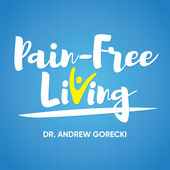
Pelvic Floor Therapists, Dr. Chupka-Fuson & Dr. Patterson
Understanding Healing: The Pelvic Floor Process
Understanding the Healing Process
If you’ve been dealing with pelvic floor problems for a while, it can be hard to imagine a future without them. But the human body is remarkably capable of repairing and adapting — as long as it’s given the right conditions.
I like to think of the healing process like tending a garden. You can’t force plants to grow, but you can give them the right soil, sunlight, and water so they can grow. Similarly, your pelvic floor needs the right environment to recover and work the way it’s meant to.
The Ingredients for Healing
- Good Nutrition & Hydration
Your muscles and connective tissues need building blocks to repair themselves — and those building blocks come from what you eat and drink. Adequate protein, vitamins, minerals, and water help tissues heal and keep muscles functioning optimally.
- Sleep & Recovery
Your body does its deepest repair work while you’re sleeping. Poor or interrupted sleep (often from getting up multiple times at night to use the bathroom) slows healing and keeps your muscles in a state of fatigue. One of our goals will be restoring nighttime comfort so you can sleep better, because better sleep = faster recovery.
- A Supportive Physical Environment
Your pelvic floor doesn’t exist in isolation. It’s part of a whole-body system that includes your hips, spine, core, and diaphragm. If those surrounding areas aren’t moving well, your pelvic floor is forced to compensate, creating extra strain. To heal, we have to improve how your whole body moves and supports itself.
- Healthy Inflammation
Inflammation is often seen as the enemy — something to be “gotten rid of” with medication. But inflammation is actually a key part of healing. It’s your body’s way of sending in the clean-up crew and kickstarting repair. Suppressing it too aggressively (especially with long-term use of certain anti-inflammatory medications) can actually slow down recovery.
Why the Pelvic Floor Is Unique
The pelvic floor is involved in almost everything you do — standing, walking, lifting, breathing, even laughing. That means it rarely gets true “rest.” Healing, then, isn’t about doing nothing — it’s about restoring the way it moves and coordinates with the rest of your body so it’s not overloaded.
The Role of a Pelvic Floor Physical Therapist
A pelvic floor physical therapist is like a detective and a coach combined. We identify where your movement patterns are breaking down, find the real source of the stress, and then guide you through exercises and strategies that restore balance.
This might involve:
- Releasing overactive muscles.
- Improving hip and spine mobility.
- Teaching your core, diaphragm, and pelvic floor to work together.
- Strengthening where support is lacking.
It’s not just about the pelvic floor itself — it’s about creating a whole-body environment where your pelvic floor can finally heal and function the way it’s meant to.
If you'd like to get together with others at an informal workshop, use this link to see when the next one is scheduled: https://www.nomorepads.com/
Learn more about the pelvic floor resources we offer: My Core Floor | Superior Physical Therapy



